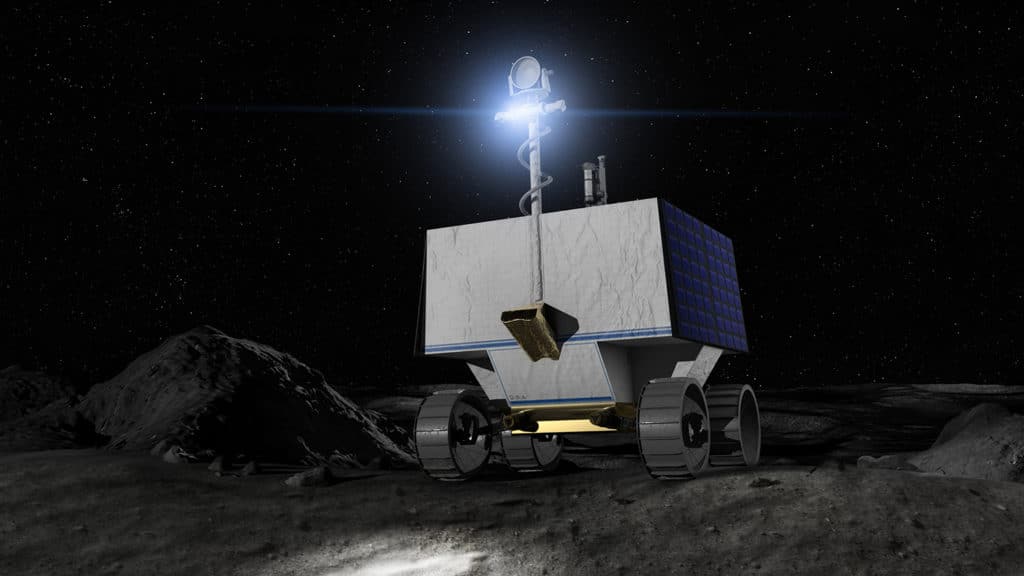Whether buried ice exists in useful amounts is one of the most pressing questions in lunar exploration, and MoonRanger will be the first to seek evidence of this on Earth.
NASA has selected Carnegie Mellon University and spin-off space startup Astrobotic, to complete the construction and development of the autonomous rover in preparation for a space mission in 2022. As part of this mission, the rover will look for signs of water at the Moon’s south pole.
MoonRanger will be delivered by the Masten Space Systems’ XL-1 lunar lander under the NASA’s Commercial Lunar Payload Services (CLPS) program. The small robotic rover aims to be the first to investigate whether buried ice is present in sufficient quantities to be useful to future lunar explorers.
The MoonRanger will be about the size of a suitcase and weigh about 24 pounds (11 kg) on Earth. It will be fast and autonomous to accomplish long-range exploration missions within the span of a week, before the dark and cold of the lunar night damages their electronics. The rover is designed to produce detailed 3D maps of the terrain and could be used to explore the polar regions for signs of ice or lunar pits for entrances to moon caves.
Because the MoonRanger is too small and light, it can’t carry a big radio for communicating directly with Earth. Thus, it will gather data independently, return to the lander, and establish short-range wireless communication with it so the lander’s radio can relay the robot’s findings to Earth. The rover is designed to repeatedly explore at the rate of 1,000 meters per Earth day in both sunlit and dark conditions.
The rover’s solar array is oriented vertically to capture the low sun angles experienced at the pole. It will, therefore, need to sense and navigate through the darkness. MoonRanger achieves night vision by projecting laser line stripes ahead of it to model the darkened terrain, much as stereo cameras do in sunlight.

MoonRanger will have competition from NASA’s own water ice-hunting, golf cart-sized rover – called VIPER – that will land on Moon in December 2022. VIPER will perform more rigorous and sustained exploration and scientific characterization of the ice. The mobile robot will go to the South Pole of the Moon to get a close-up view of the location and concentration of water ice that could eventually be harvested to sustain human exploration on the Moon, Mars, and beyond.
“If we could make a one-kilometer trek, we’d be very happy,” said David Wettergreen, a research professor of robotics and co-investigator for the rover project. “If we could do it twice, that would be amazing.” Uncertainty is inescapable for a mission as ambitious as MoonRanger. “In the face of that, there is only the question of whether to do it anyway,” he added. “This has all the elements of purpose, technology, exploration, science, and fulfillment of the vision. These leave no question about going for it and giving it our all.“
